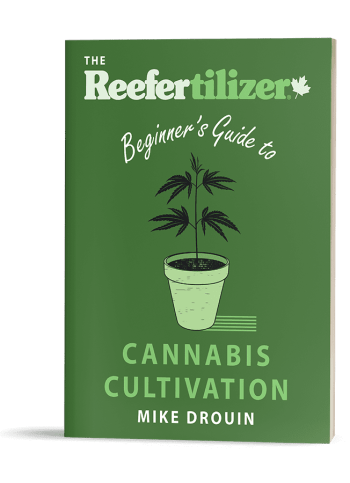Speedy Weed
For many cannabis cultivators, the general goal is to harvest as quickly as possible without sacrificing the quality of their crop. Whether it’s due to environmental constraints, personal deadlines, or simply the eagerness to enjoy the fruits of their labor, finding ways to expedite the growth process can be incredibly beneficial.
From optimizing environmental conditions to selecting the right genetics, we’ll cover the essential tips that can help you go from sprout to harvest faster.
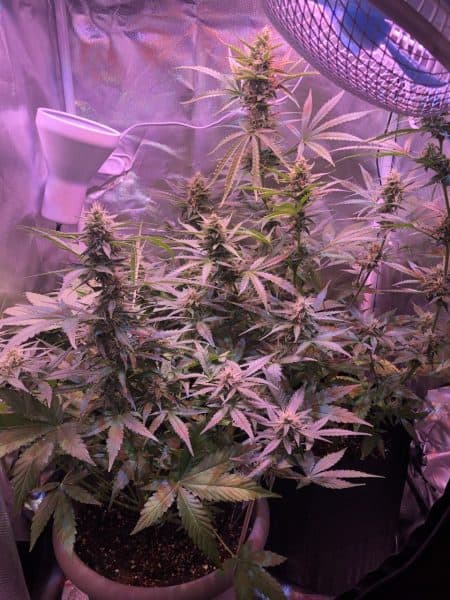
Learn to Grow Better Weed
Download our free guide to growing amazing cannabis at home.
Click Here For More Info
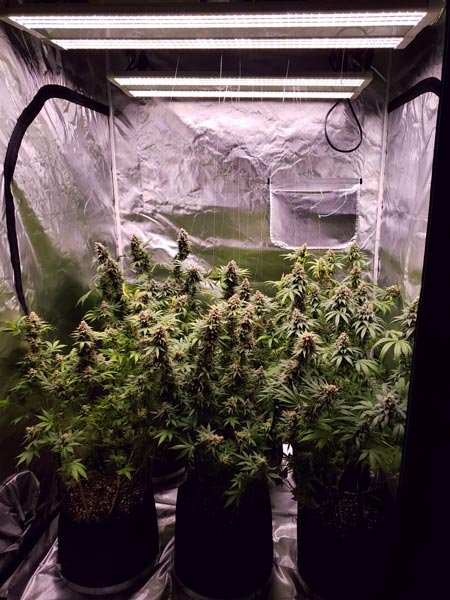
Optimizing The Environment for Rapid Cannabis Growth
To maximize the growth rate and quality of your cannabis plants, it’s essential to fine-tune the environmental conditions, particularly temperature and humidity. These factors play a pivotal role in mimicking the plant’s natural ecosystem and encouraging healthy development.
Temperature:
Cannabis plants flourish within a certain temperature range. During the vegetative stage, aim to maintain a temperature between 70-85°F (20-30°C). When plants enter the flowering phase, a slightly cooler range of 65-80°F (18-26°C) is optimal to promote dense bud formation and prevent heat stress.
To manage temperatures effectively:
- Use a reliable thermostat to monitor the grow room.
- Install fans or air conditioners to cool down the space if temperatures rise above the desired range.
- Employ heaters during colder periods to maintain a steady temperature.
- Consider using LED lights, which emit less heat compared to HID lamps.
Humidity:
Humidity levels are just as crucial as temperature. Young seedlings and vegetative plants thrive at 40-60% relative humidity. Clones prefer higher humidity, around 70-80%, until roots are well-established. During flowering, aim to keep humidity below 50% to prevent mold and bud rot.
To control humidity:
- Utilize a hygrometer to track humidity levels accurately.
- Deploy dehumidifiers to reduce excess moisture, especially in the flowering stage.
- Use humidifiers to add moisture during the vegetative stage if the air is too dry.
- Ensure proper ventilation to maintain a consistent flow of air and prevent humidity build-up.
Additional Tips for Environment Control:
- Ensure good air circulation with oscillating fans to strengthen stems and prevent mold.
- Use reflective wall coverings to maximize light distribution.
- Adjust the light spectrum for vegetative growth (blue light) and flowering (red light).
- Consider CO2 supplementation to boost photosynthesis and growth, but only if temperature and humidity are well-controlled.
By diligently managing temperature and humidity, along with other environmental factors, you create the ideal conditions for your cannabis plants to grow swiftly and produce high-quality yields. Remember, the key to successful cultivation is constant monitoring and adjustment to maintain these optimal growing conditions.
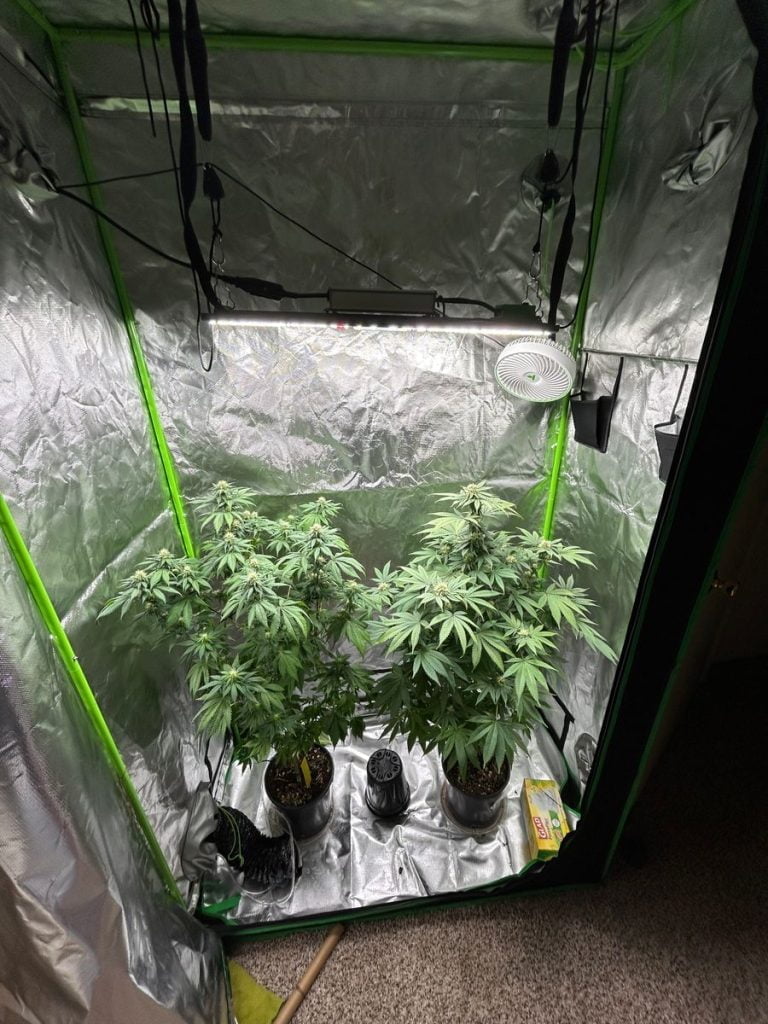
Choosing the Right Genetics
Selecting the right strain (or cultivar) is pivotal when trying to grow cannabis quickly. Growing female cannabis seeds is the first thing to keep in mind if you want to save some time. Some strains have faster vegetative growth rates and shorter flowering times. Autoflowering strains, for example, can be harvested in as little as 8-10 weeks from seed. These strains are a crossbreed that includes Cannabis ruderalis genetics, a species known for its quick growth cycle and resilience.
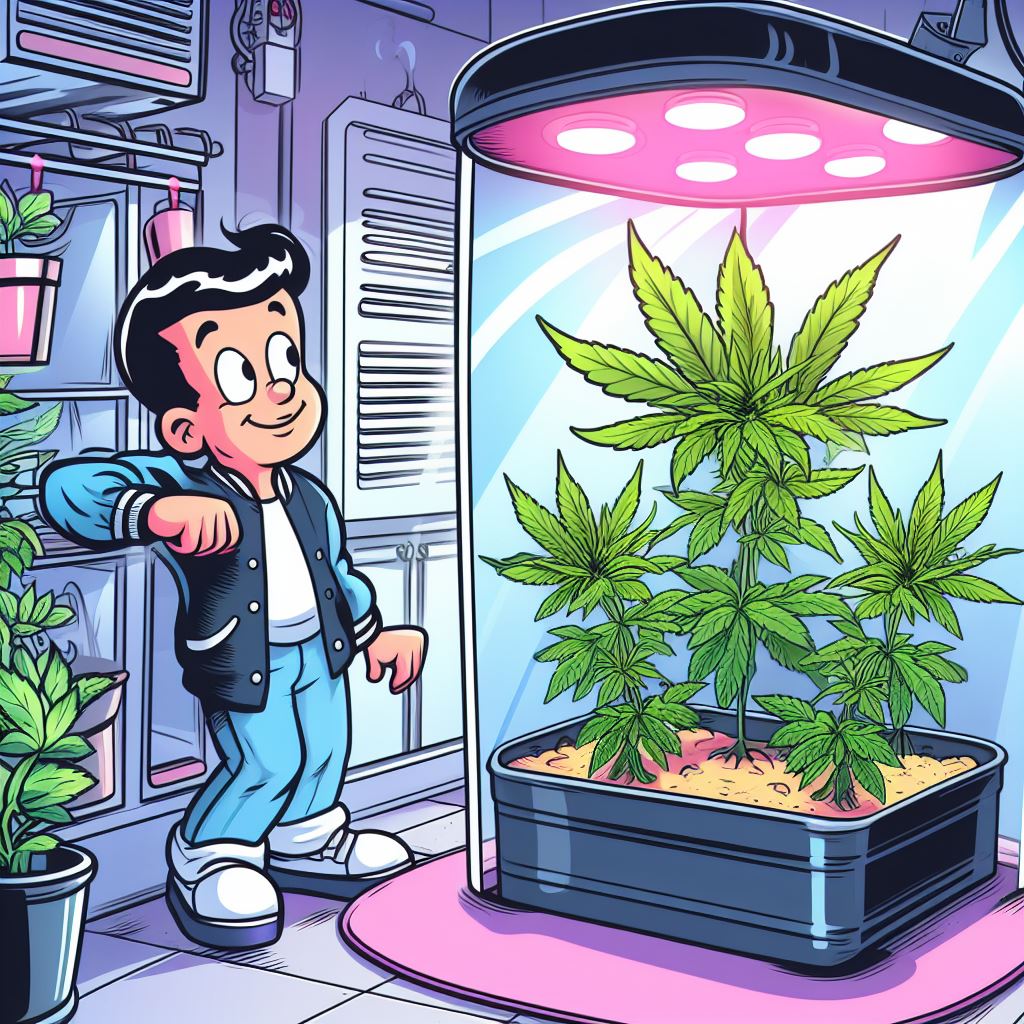
Autoflowering cannabis plants are particularly advantageous for growers looking to maximize turnover or those in regions with shorter growing seasons. Unlike their photoperiod counterparts, autoflowering plants do not require a change in the light cycle to initiate flowering. This means they can be grown quickly, resulting in multiple harvests within a single season.
For those who prefer photoperiod strains, there are also options that feature rapid growth. Certain hybrid strains have been selectively bred to reduce the time to harvest without sacrificing too much in terms of yield or potency. For instance, the Blue Dream strain is a fast-flowering photoperiod variety that can reach maturity with about 6 weeks of 12/12 lighting. Medical cannabis growers might consider strains like Tatanka Pure CBD, which offers a swift 7-week flowering period, allowing for quick access to CBD-rich buds. You can find other fast flowering cultivars at I Love Growing Marijuana as well.
Ultimately, when choosing a strain for speed, it’s essential to consider the specific growing conditions and personal preferences. Fast-growing genetics can provide a quicker turnaround, but yield will likely be lower.
The Importance of Light Cycles
Light cycles play a pivotal role in the growth and development of cannabis plants, acting as a signal that tells the plant when to transition from vegetative growth to the flowering stage. In the vegetative stage, cannabis plants typically benefit from 18-24 hours of light per day. This extended exposure to light encourages faster growth, as the plants have more time to photosynthesize and produce energy for growth.
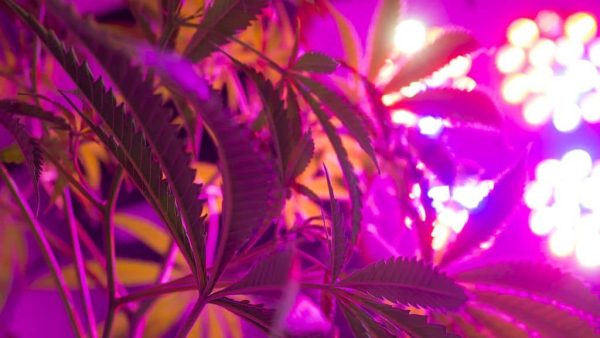
Light Schedule Adjustments
Adjust the lights around a photoperiod plant to a 12-hour light and 12-hour dark cycle and the plants enter the flowering stage.
This change in light schedule signals the plants to start forming buds. Some growers experiment with different light schedules, but the 12/12 cycle is widely used. During this stage, the nutrient mix should be adjusted to lower nitrogen levels, which are suitable for blooming.
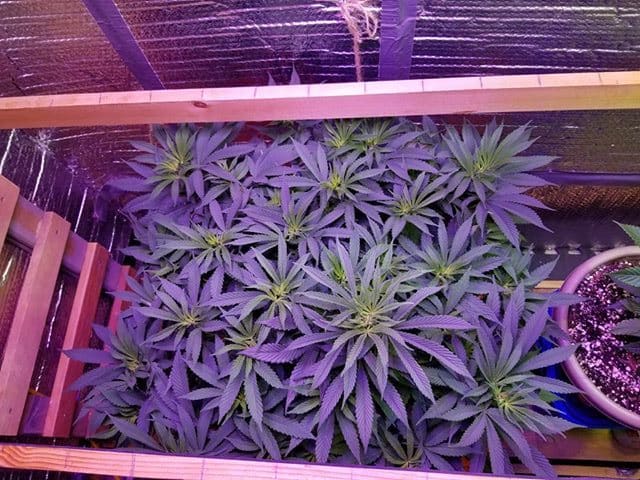
Advanced Growing Techniques
To accelerate your cannabis growth and potentially increase your yield, you can implement advanced growing techniques that savvy cultivators swear by. Techniques such as the Sea of Green (SOG), and the Screen of Green (ScrOG) can significantly speed up the cultivation process.
Sea of Green (SOG)
The SOG method involves growing many small cannabis plants close together. This technique allows for a quick turnaround because plants spend less time in the vegetative stage. By optimizing space, each plant produces multiple bud sites, and the overall cycle is sped up, potentially allowing for an additional harvest within a year.
SOG is typically executed with clones to maintain uniformity in growth rates, height, and maturation, ensuring an even canopy under the grow lights. Although it is possible to use seeds, it’s crucial to select seeds from the same strain, preferably one that doesn’t grow too tall or lanky.
Screen of Green (ScrOG)
The ScrOG technique, on the other hand, involves placing a screen or net above the plants. As they grow, the branches are woven into the screen, encouraging horizontal growth and allowing light to penetrate more evenly throughout the canopy. This method not only maximizes space but also increases light exposure to all parts of the plant, promoting a higher yield of buds.
Potential Pitfalls
- Overcrowding: In SOG setups, too many plants in a small area can lead to overcrowding, which can stress the plants and reduce airflow, potentially inviting pests and diseases.
- Improper Training: When using ScrOG, improper training can damage the plants and reduce their potential yield. It’s essential to gently guide the plants through the screen without causing stress.
Effective Nutrient Management
To promote faster growth in cannabis cultivation, understanding and implementing best practices for feeding your plants is crucial. Providing the exact right amount of nutrients at the appropriate time can significantly accelerate growth, increase yields, and enhance the quality of your weed.

Best Practices for Feeding Cannabis Plants
- Proper Nutrient Ratios: Tailor your nutrient mix to the plant’s stage of growth. Use a high nitrogen/phosphorus/potassium (NPK) ratio during the vegetative stage and a low nitrogen, high phosphorus/potassium ratio during the flowering stage. Reefertilizer Grow and Bloom will do exactly this.
- Monitor Nutrient Levels: Avoid under or overfeeding by monitoring the plant’s response to nutrients. By measuring the EC of your nutrient solution and runoff you can estimate how much your plants are asborbing..
- Mineral vs. Organic Nutrients: Synthetic nutrients (like Grow and Bloom) are absorbed faster by the plant, leading to quicker growth and larger yields when compared to organic nutrients.

Mistakes and Fast Solutions
- Nutrient Problems or Pest Infestations: Young plants are particularly vulnerable to setbacks. An imbalance in nutrients or an unexpected pest infestation can dramatically slow down growth. It’s essential to monitor your plants closely and address any signs of distress promptly.
- Heat Stress or Light Burn: During the vegetative stage, too much heat or light can not only slow down growth but also prevent buds from maturing properly in the flowering stage. place your hand under the light at plant height. If it’s uncomfortable, it’s uncomfortable for your plants as well.
- Accidental Re-vegging: If your flowering plants are exposed to light during their dark periods, they may revert to the vegetative stage. This process, known as re-vegging, will stop your buds from maturing. To prevent this, maintain a strict light schedule and avoid light leaks.
- Improper Nutrient Application: During different stages of growth, your cannabis plants have specific nutrient needs. In the vegetative stage, they require nutrients that promote optimal growth. Using the wrong type or amount of nutrients can hinder their development. Familiarize yourself with the right nutrients for growing weed and follow a feeding schedule tailored to your plants’ current stage of growth.
Final Thoughts: Accelerating Cannabis Growth
Maximizing the speed of cannabis cultivation requires a multifaceted approach. By selecting the right genetics, optimizing your grow space, managing nutrients effectively, employing strategic lighting techniques, and practicing careful training and pruning, you can significantly reduce the time it takes for your plants to reach maturity. However, it’s crucial to maintain a delicate balance between speed and the health of your plants to ensure a high-quality yield.
As always, stay informed about the legal status of cannabis cultivation in your area, and ensure that your growing practices comply with local laws and regulations. Happy growing!
Accelerate Your Cannabis Growth
Looking to speed up your cannabis cultivation? Check out these resources:
- Discover the fastest strains for your grow with our guide on
High-Yielding Strains. - Boost your plant’s growth with our nutrient-rich solutions at
Maximizing Your Grow with Reefertilizer Nutrients. - Optimize your plants’ environment in every stage of growth with our guide on
The Ideal Environment for Cannabis Growth. - Learn about common cannabis pests and how to address them with our article on
Common Cannabis Plant Problems.
If you want to learn even more about growing good cannabis, we offer a free 40+ page guide full of images.
Now available on Amazon.
Sign up for our newsletter and download the digital copy today!
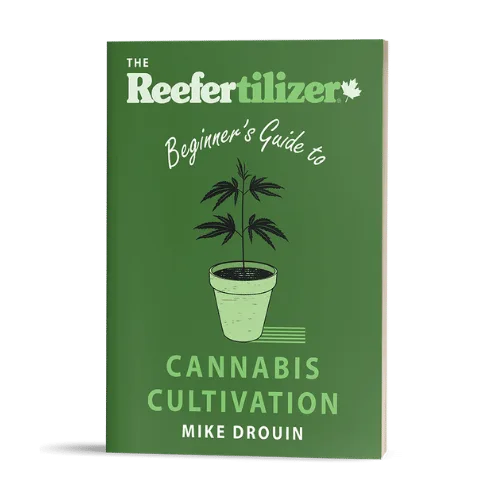
This guide will answer many questions about growing cannabis, like the following...
Selecting Seeds
Identify and Correct Problems
Maximize Yield
Much More...
Get a Chance to INSTANTLY WIN a Reefertilizer Nutrient Kit When You Sign Up.
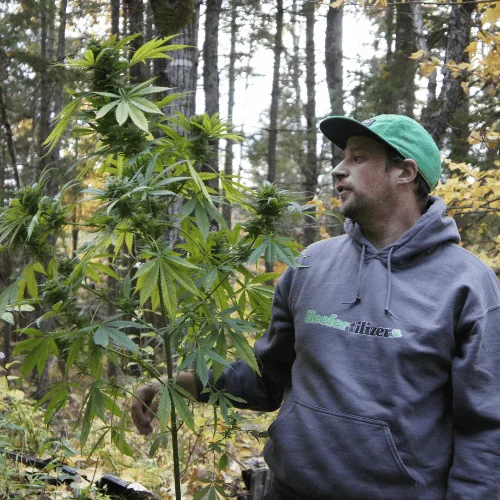
Mike Drouin is the co-founder of Reefertilizer. He’s an experienced craft cannabis grower and a writer of many articles regarding the process. Mike lives on Vancouver Island and enjoys cycling and camping and will sometimes combine the two.

